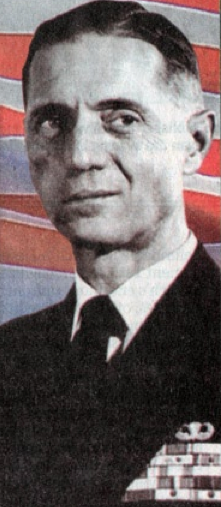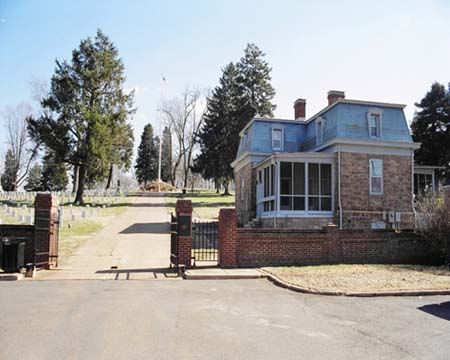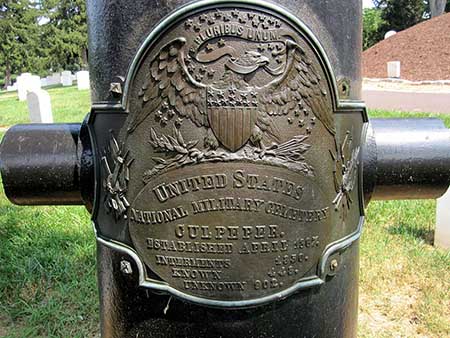
Another Great American left us over the weekend. This departure is worth noting on it’s own merit, but the death of RADM John Marocchi links us back to our pal Mac Showers. John was the senior surviving retired Naval Intelligence Admiral, and his story was a unique one. For the small community that cares about such things, here is how the obituary read:
12 July, 2014, RADM John L. Marocchi, USN-Ret. (94) of heart failure at Midlothian, VA. Born in Bologna, Italy, John Marocchi came to the United States with his family as a child. He felt a strong allegiance to his adopted country, and received an appointment to the US Naval Academy at Annapolis where he graduated in the class of 1942. His graduation date was accelerated to Dec. 19, 1941, just twelve days after the attack on Pearl Harbor. His first orders were to the pre-commissioning crew of the light cruiser USS Birmingham (CL-62) at NOB Norfolk.
After commissioning, the “Mighty B” escorted a convoy to Africa and became part of Operation HUSKY, the invasion of Sicily. The cruiser than shifted colors to the Pacific, where it gained eight additional battle stars and participated in the engagement off Bougainville (24 October 1944), where it absorbed hits from two Japanese torpedoes and an aerial bomb. Mighty B stayed in the fight, coming to the aid of the stricken carrier USS Princeton (CVL-23), blazing from previous battle damage, to render assistance in fighting the flames.
At 1523, as Birmingham came alongside, internal fires caused bombs to detonate violently, blowing off the carrier’s stern, showering the cruiser’s topsides with fragments. The explosion killed or wounded 649 men of the 1,200 man crew. Admiral Marocchi himself was injured severely and was hospitalized for 16 months of recovery. He bore his scars with honor the rest of his life.
Following WWII, he remained on active duty and attended the Naval Intelligence School at Anacostia. Subsequent tours included service in the Korean and Vietnam conflicts, including a tour as Fleet Intelligence Office on the staff of the Commander in Chief, Pacific Fleet.
Following a three-year tour in Germany as the DJ2 at USEUCOM, he was assigned to NSA at Fort Meade as one of two deputy directors. He retired in 1975 after 37 years of active service with many honors, including the Legion of Merit and the Purple Heart.
In retirement, he was active in the Naval Intelligence Professionals and on the Board of the Virginia War Memorial. Predeceased by his wife of 55 years, Mary P. Marocchi, his parents, brother and sister, and many, many friends and classmates, he is survived by his second wife, Harriette, his two daughters, Helen and Sory, five grandchildren and seven great-grandchildren. He preferred that any memorial contributions be made to the Virginia War Memorial in Richmond, VA.
Admiral Tom Brooks remarked “John had celebrated his 94th birthday on the 6th of June- the anniversary of D-Day- and was lucid and able to talk on the telephone as recently as Thursday.”
John was the dean of the Naval Intelligence Community (the Flag Officer with the earliest date of commission), having succeeded Mac Showers in that role when Mac passed away in October 2012.
RADM Don Harvey, USNA ’47, now succeeds as the dean of the Naval Intelligence community.
We understand that Admiral Marocchi will be buried at the National Cemetery at Culpepper, VA, but funeral arrangements are not complete. We will pass on further info as it becomes available.”
That ended the official communication- most of us retired spooks have Arlington National cemetery on the list of final destinations, but there are other alternatives. Fort Rosencrans National Cemetery atop Point Loma in San Diego always had a certain appeal, and there are still niches left for the placement of urns in the Colombarium. The view is spectacular, though naturally you can’t see much from the inside.
There is a network of national cemeteries to handle the nine million vets who served in World War Two, plus those of us on either side of history’s great divide. I was surprised- I don’t know why- to discover that Culpeper has its own National Cemetery. There is a good reason, and I should have known it.
During the Late Unpleasantness Between the States, the county and those adjacent were the scenes of savage fighting. Culpeper was a strategic railhead almost halfway between the warring capitals, and with hundreds of thousand of troops and hundreds of encounters, the dead were many and laid in makeshift graves where they fell.
Both sides used the town for winter quarters in between fighting, and the little town was the jumping off point for Lee’s Pennsylvania Campaign in 1863, and Grant’s Overland Campaign to capture Richmond in 1864.
The major battles included the great cavalry engagement at Brandy Station just to the north of town, Cedar Mountain just to the south, and The Wilderness and Chancellorsville to the east.
After the guns fell silent, a reburial program was initiated. In 1867, Culpeper National Cemetery was established to reinter many of the remains from the makeshift sites, most of them by the listed as “Unknown.” The caretaker’s lodge was erected in 1872 and made of solid brick in the Second Empire Victorian mode. As an added historical note, the structure was designed by Union Quartermaster General Montgomery Meigs. Who also was responsible for the Washington Aqueduct that still provides the drinking water for the Capital, and the structure is of historic value in its own right.

The thinking at the time was that the original six-acre plot was sufficient to future needs, and the last improvements to the infrastructure were made by the Roosevelt Administration in the 1930s- straightening the headstones, that sort of thing.
That was basically all that happened to the National Cemetery in what was now a strategic nothing, just a sleepy little junction town. Having operated without any major improvements since the New Deal, and out of space with the addition of the veterans of the Spanish and First Wars, the cemetery was closed to new interments on November 17, 1972.
Obviously there was a growing need to accommodate the veterans of The Big One, and the cemetery was transferred from the Department of the Army to the smoothly efficient management of the Veteran’s Administration. Property was donated by the VFW and other interested parties, and there is now plenty of room for veterans of all past and future wars.
Admiral Marocchi lived his last years in Midlothian, VA, not far away, but light years from the officious bustle of Washington. I think he might be onto something regarding ultimate destinations. Next time I am down at the farm, I am going to check it out seriously.
I mean, why not? Who would want to stay in DC for eternity with that sort of traffic?

(Union Cannon mounted as a monument, Culpeper National Cemetery).
Copyright 2014 Vic Socotra
www.vicsocotra.com
Twitter: @jayare303
